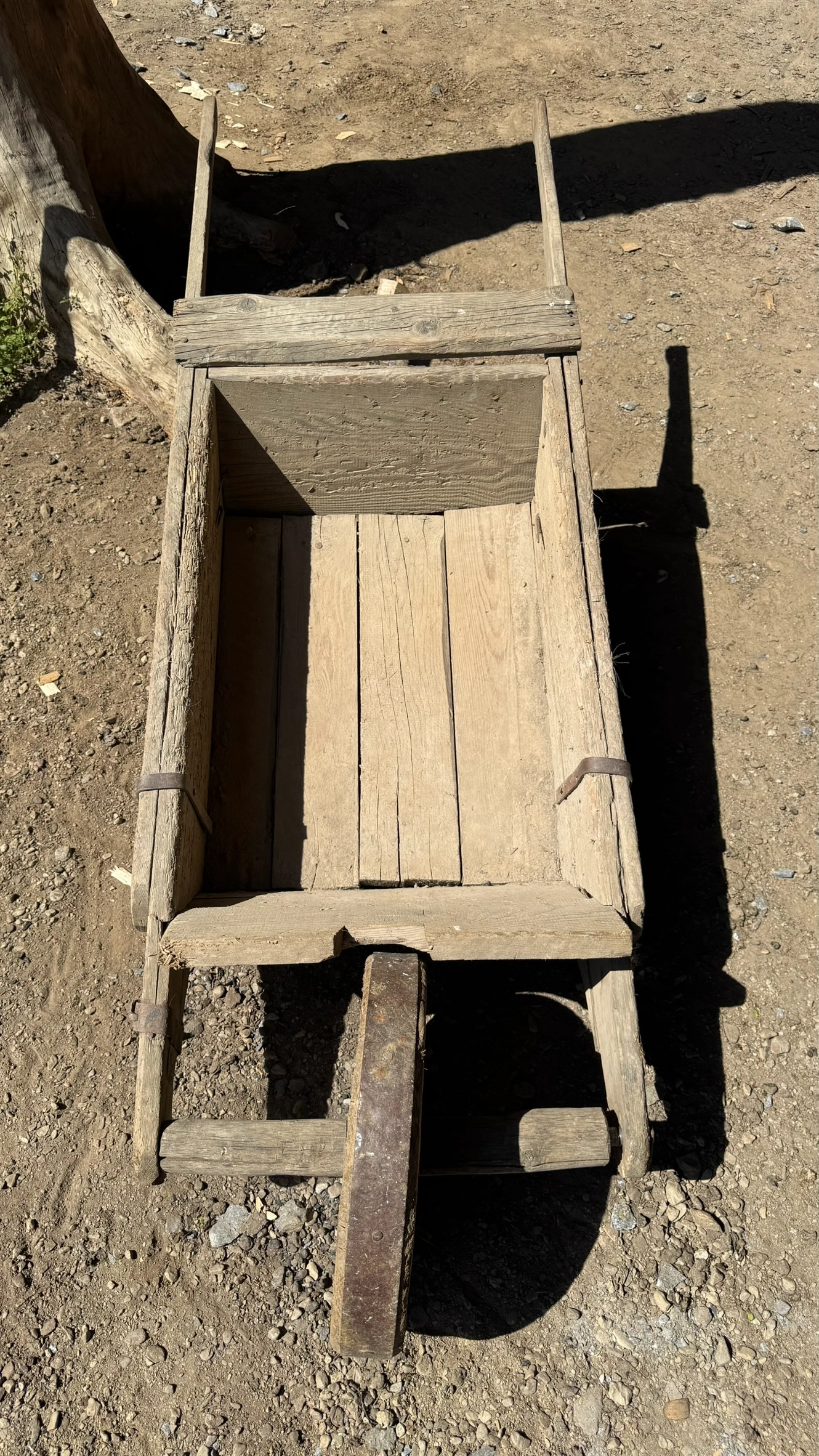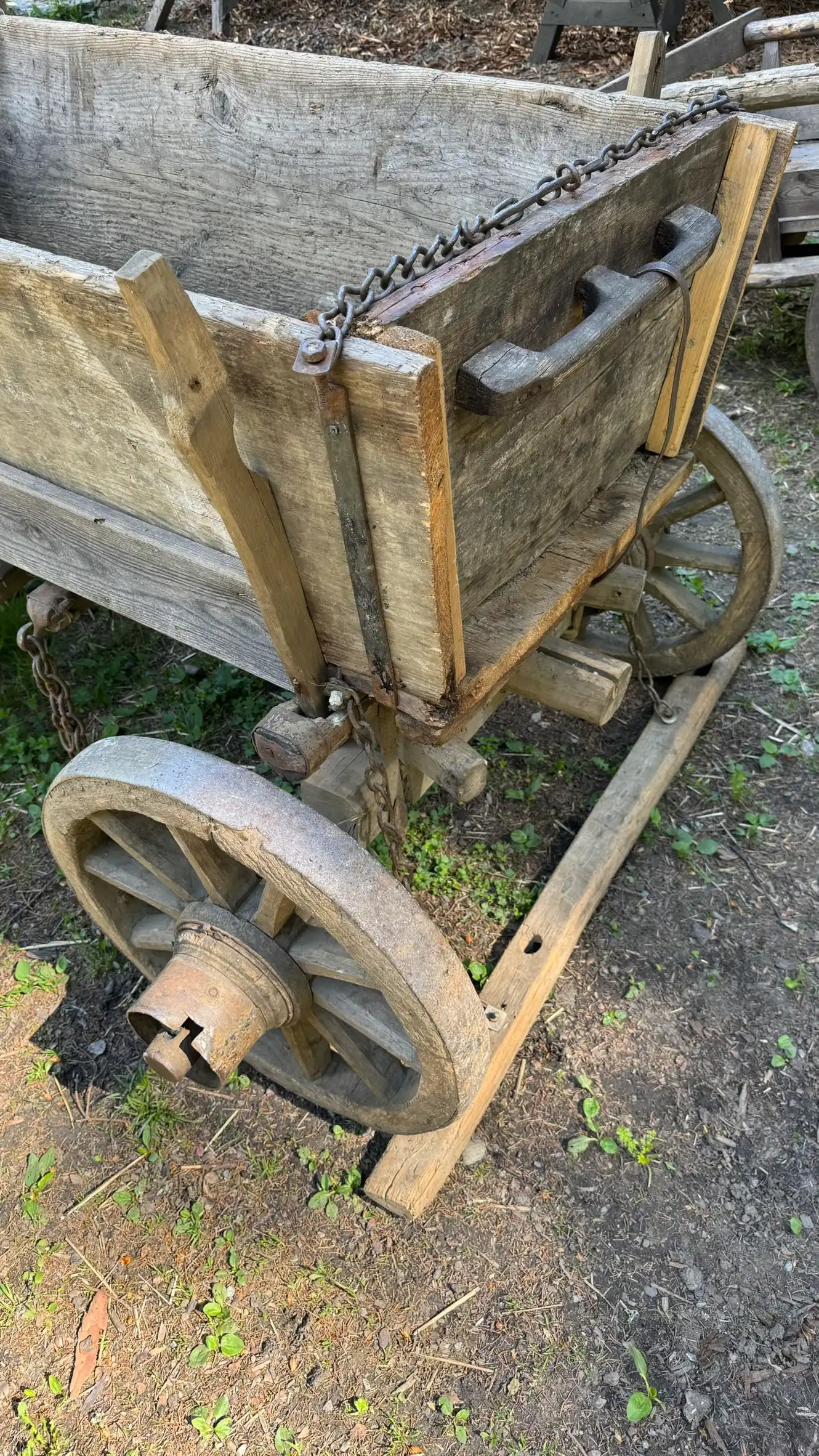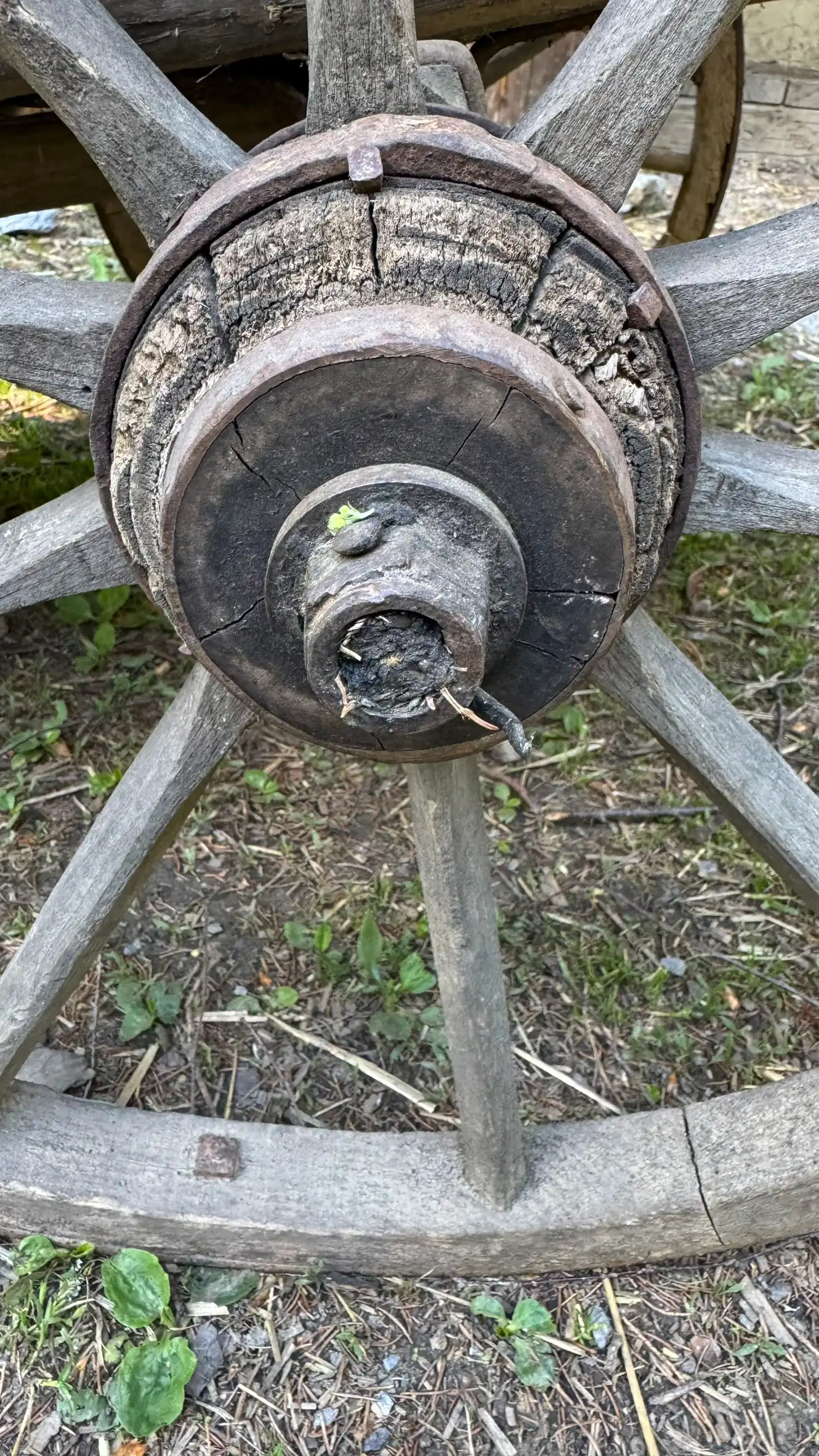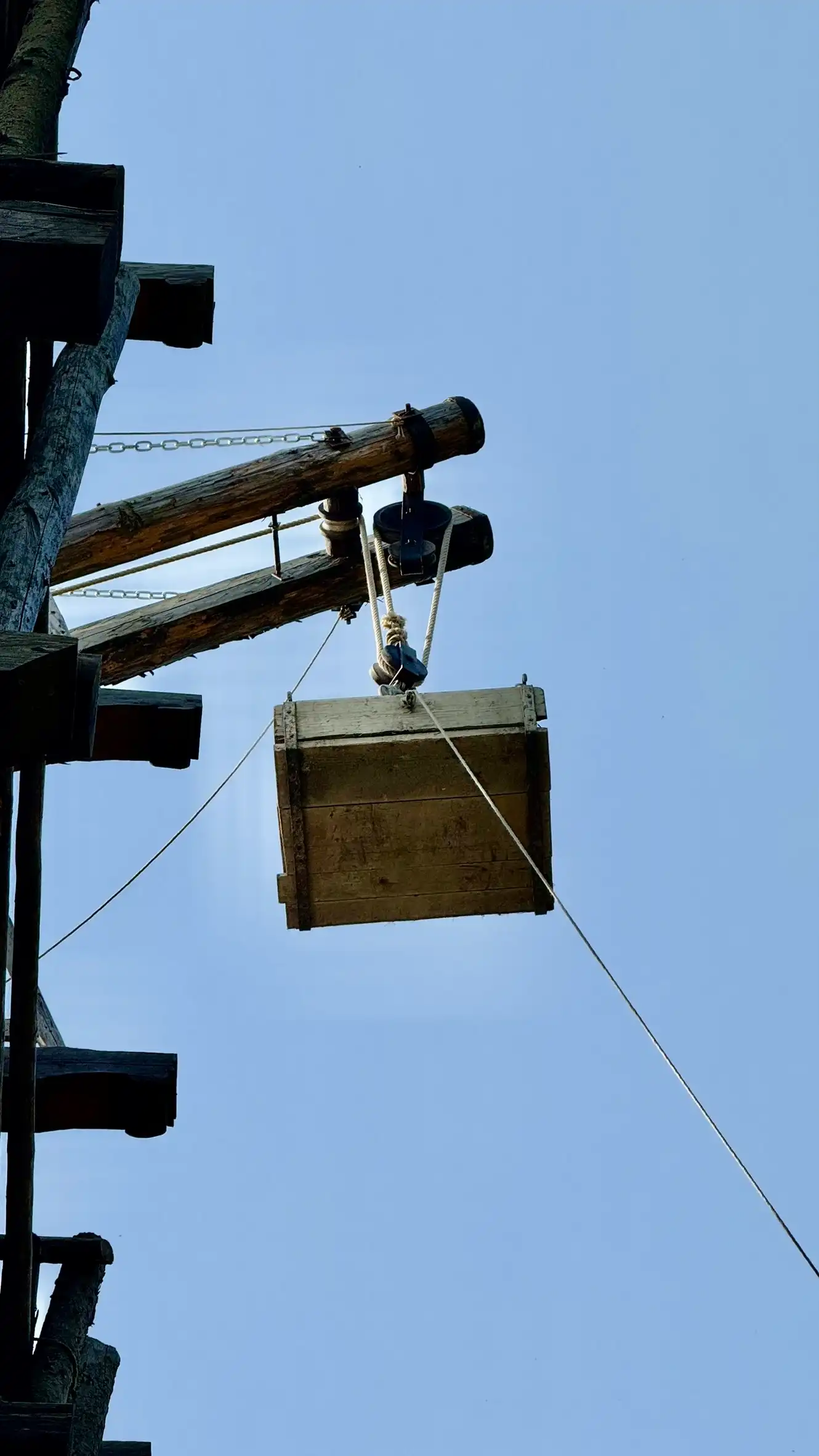Heavy Load Transportation
In high and late medieval construction, various technical tools were used to transport often heavy loads. On the construction site, most loads are preferably moved by our Noriker horses.
Roughly hewn stone blocks were already transported over long distances to construction sites in the Early Middle Ages using cargo ships, sledges (drag sleds), carts, and wagons. Sledges were used not only in winter but throughout the year. Thanks to their robust construction, they were often used on site for transporting heavy building materials. These materials were also moved on site with the help of rollers, stretchers, baskets, carts, and wagons by day labourers. Helpers unloaded the stone transporters, pushed wheelbarrows (used from the 12th/13th century onwards), hauled tubs and stretchers filled with building materials, led draught and pack animals, walked inside the treadmill or turned the windlass.
Our Noriker horses pull the stone or sand cart uphill with a load of around 350 kg. To complete the tower alone, approximately 3,500 tonnes must be moved.
For vertical transport, winches, cranes, tilting beams (a mast embedded vertically in the ground with an arm mounted at the top that could pivot and swivel, and was longer than the mast), ramps, and occasionally pulleys were used. Pulleys were relatively rare in medieval lifting technology due to the high cost of ropes and the difficulty in sourcing them in the required lengths. Naturally, builders also transported bricks or smaller ashlar stones in boxes or on stretchers, shoulder poles, and wheelbarrows. Mortar was carried in tubs, barrels, or troughs.
In 2016, two jib cranes were erected on the site, which remained in operation until 2022. The new crane used in the construction of the residential tower runs through the third storey, can swivel 330°, and the hoisting mechanism is operated by a windlass. The lifting speed is about 3 m/min, and it can raise loads weighing up to 350 kg.









